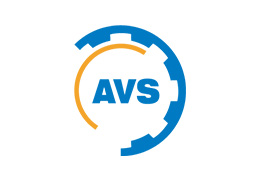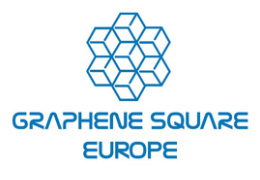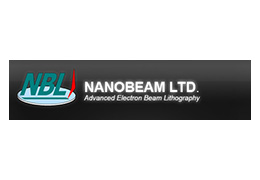Model CS1350 is the high current potentiostat. The maximum current output can be up to 5A, and potential control range is ±10V. It is an ideal tool for the people whose testing system requires high current. It contains a fast digital function generator, high-speed data acquisition circuitry, a potentiostat and a galvanostat. With high performance in stability and accuracy with advanced hardware and well-functioned software, it is a comprehensive research platform for corrosion, batteries, electrochemical analysis, sensor, life science and environmental chemistry etc.

Applications
(1) Electrosynthesis, electrodeposition(electroplating), anodic oxidation, etc
(2) Electrochemical analysis
(3) New energy materials (Li-ion battery, solar cell, fuel cell, supercapacitors), advanced functional materials, and sensor
(4) Corrosion study
(5) Evaluation of corrosion inhibitor, water stabilizer, coating and cathodic protection efficiency.
Specifications
| Specifications | |
| Potential control range: ±10V | Current control range: ±5A |
| Potential control accuracy: 0.1%×full range±1mV | Current control accuracy: 0.1%×full range |
| Potential resolution: 10μV | Current sensitivity:10pA |
| Potential rise time: <1μS(<10mA), <10μS(<5A) | Current range: 5A~200pA, 12 ranges |
| Reference electrode input impedance: 1012Ω||20pF | Maximum current output: 5.0A |
| Compliance voltage: ±13V | Current increment during scan: 1mA @1A/mS |
| CV and LSV scan rate: 0.001mV~10V/s | Potential increment during scan: 0.076mV @1V/mS |
| CA and CC pulse width: 0.0001~65000s | DPV and NPV pulse width: 0.0001~1000s |
| SWV frequency: 0.001~100KHz | Minimum potential increment in CV: 0.075mV |
| AD data acquisition:16bit@1MHz, 20bit @1kHz | Potential and current range: automatic |
| DA resolution: 16bit, setup time: 1μs | Low-pass filters: covering 8-decade |
| Communication Interface: USB | Instrument weight: 8Kg, dimensions: 36 x 38 x 14 cm |
| EIS (Electrochemical Impedance Spectroscopy) | |
| Signal generator | |
| Frequency range:10μHz~1MHz | AC amplitude:1mV~2500mV |
| Frequency accuracy:0.005% | DC Bias: -10V~+10V |
| Output impedance:50Ω | Waveform: sine wave, triangular wave and square wave |
| Wave distortion:<1% | Scanning mode: logarithmic/linear, increase/decrease |
| Signal analyzer | |
| Integral time:minimum:10ms or the longest time of a cycle Maximum:106 cycles or 105s | Measurement delay: 0~105 s |
| DC compensation | |
| Potential compensation range:-10V~+10V | Current compensation range:-1A~+1A |
| Bandwidth: 8-decade frequency range, automatic and manual setting | |
Techniques
Techniques - model CS1350
Stable polarization
- Open Circuit Potential (OCP)
- Potentiostatic (I-T curve)
- Galvanostatic
- Potentiodynamic (Tafel plot)
- Galvanodynamic (DGP)
Transient Polarization
- Multi Potential Steps
- Multi Current Steps
- Potential Stair-Step (VSTEP)
- Galvanic Stair-Step (ISTEP)
Chrono Method
- Chronopotentiometry (CP)
- Chronoamperametry (CA)
- Chronocaulometry (CC)
Voltammetry
- Linear Sweep Voltammetry (LSV)
- Cylic Voltammetry (CV)
- Staircase Voltammetry (SCV)
- Square Wave Voltammetry (SWV)
- Differential Pulse Voltammetry (DPV)
- Normal Pulse Voltammetry (NPV)#
- Differential Normal Pulse Voltammetry (DNPV)
- AC Voltammetry (ACV)
- 2nd harmonic AC Voltammetry (SHACV)
- Fourier Transform AC Voltammetry (FTACV)
Amperometric
- Differential Pulse Amperometry (DPA)
- Double Differential Pulse Amperometry (DDPA)
- Triple Pulse Amperometry (TPA)
- Integrated Pulse Amperometric Detection (IPAD)
Stripping Voltammetry
- Potentiostatic Stripping
- Linear Stripping
- Staircase Stripping
- Square Wave Stripping
- Differential Pulse Voltammetry Stripping
- Normal Pulse Voltammetry Stripping
- Differential Normal Pulse Voltammetry Stripping
Electrochemical Impedance Spectroscopy (EIS)
- EIS vs Frequency (IMP)
- EIS vs Time (IMPT)
- EIS vs Potential (IMPE)(Mott-Schottky)
Corrosion Measurements
- Cyclic polarization curve (CPP)
- Linear polarization curve (LPR)
- Electrochemical Potentiokinetic Reactivation (EPR)
- Electrochemical Noise (EN)
- Zero resistance Ammeter (ZRA)
Battery test
- Battery Charge and Discharge
- Galvanostatic Charge and Discharge (GCD)
- Potentiostatic Charging and Discharging(PCD)
- Potentiostatic Intermittent Titration Technique(PITT)
- Galvanostatic Intermittent Titration Technique(GITT)

















